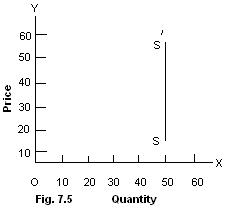There are five degrees of price
elasticity of supply:
(1) Infinitely
Elastic Supply:
When the amount supplied at the ruling
price is infinite, we say the supply is infinitely elastic. An infinitely
elastic supply curve is a horizontal straight line as is shown in the figure
7.1.
Diagram/Figure and
Example:
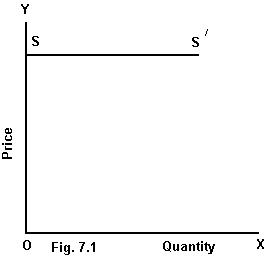
In this diagram 7,1, when the price is OP, the producer supplies an infinite
amount of goods if the price falls slightly below OP then nothing will be
supplied by him.
(2) Elastic Supply:
When the percentage change in the
amount of a good supplied is greater than the percentage change in price that
generated it. the supply is then said to be elastic supply.
For example, if the price of
oranges increases from $5 to $6 and the quantity supplied rises from 150 to 600
oranges, the supply will be elastic.
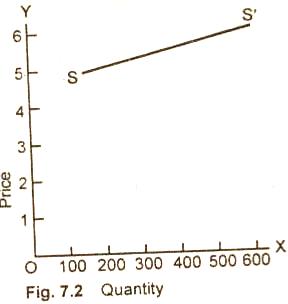
In the diagram 7.2 SS/ supply curve is elastic and the numerical value
for elasticity is greater than 1.
(3)
Unitary Elasticity:
When the percentage change in the quantity supplied is exactly equal to percentage change in
price that evoked it, the supply is said to have elasticity equal to unity, the
elasticity of supply is equal to 1.
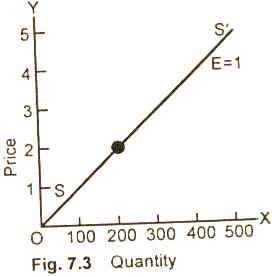
In the diagram 7.3 SS/ supply curve drawn through the origin has unit
elasticity of supply.
(4) Inelastic Supply:
When the percentage change in the
quantity supplied is less than the percentage change in the price that generated
it, the supply is said to be inelastic. The inelasticity of supply
is less than 1.
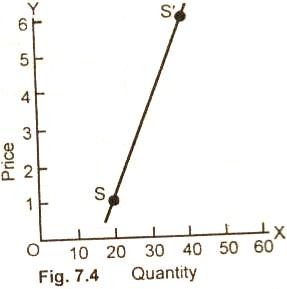
In this figure 7.4 SS/ supply curve (which is steeper than the elastic supply
curve) shows that with a significant change in price, the quantity
offered for sale is not very much affected.
(5) Perfectly Inelastic
Supply:
In perfectly inelastic-supply, the quantity
supplied does not change as price changes. The elasticity of supply in other
words is zero.
For example, if the price of a painting by an artist who has
died, rises from $10 thousand to $50 thousand, the supply of the painting cannot
be increased. Diagram 7.5 shows the perfectly inelastic supply.
